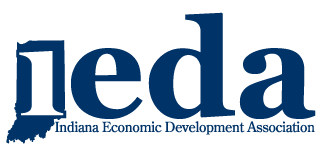317-454-7013 | info@ieda.org |
 |
COVID-19 Resources
Back on Track Indiana |
|
Rapid Recovery for a Better Future
Ice Miller - Summary of COVID-19 Federal Loan Programs
On March 25, 2020, the Senate approved legislation known as the Coronavirus Aid, Relief, and Economic Security Act (the “CARES Act” or the “Act”), which is designed to provide financial assistance to individuals, businesses, nonprofits, and state and local governments impacted by the COVID-19 crisis. Section 1102 of the Act creates the Payroll Protection Program (the “Program”) pursuant to which the Small Business Administration (SBA) has authority to commit to $350 billion in forgivable business loans (referred to herein as “covered loans”) under Section 7(a) of the Small Business Act (“7(a)”). The following is a brief summary of the Program:
- Eligible Recipient – During the period beginning on Feb. 15, 2020, and ending on June 30, 2020 (the “covered period”), covered loans are generally available to any business concern (including sole proprietorships and self-employed individuals) or nonprofit organization that employs not more than 500 employees (including individuals employed on a full-time, part-time or other basis).
- A special rule permits businesses in the “accommodation and food services sector” that employ not more than 500 employees per physical location to be eligible to receive a covered loan.
- Another special rule waives the Small Business Act’s affiliation rules for businesses operating as a franchise and for businesses in the “accommodation and food services” sector.
- Note that the general 7(a) requirement that in order to be eligible, the rule that a small business concern is eligible only if it is “unable to obtain credit elsewhere” does not apply.
- Loan Amount – The maximum loan amount for a covered loan is generally equal to the product of (x) 2.5, multiplied by (y) the average monthly payroll costs of the business (excluding the compensation to any individual employee in excess of $8,333 (i.e., $100,000 annualized)), capped at $10 million.
- Use of Proceeds – In addition to otherwise permissible uses, covered loan proceeds may be used during the covered period for payroll costs, interest on existing mortgage and other debt obligations (i.e., loans incurred before Feb. 15, 2020), rent and utilities.
- No Collateral Required – During the covered period, no collateral is required for a covered loan.
- No Guaranty Required – Unlike with respect to other SBA loans, no personal guaranty is required for a covered loan during the covered period.
- Deferral – Borrowers are generally entitled to complete payment deferment relief for a period of not less than six months and not more than one year.
- Forgiveness – Borrowers are eligible for forgiveness of debt on a covered loan in an amount equal to the sum of the following costs incurred during the covered period: payroll costs, interest on “covered mortgage obligations” (which is defined to include loans secured by real or personal property), payments on “covered rent obligations” and “covered utility payments.” Note that because the loan size is relatively small and the period for purposes of counting qualifying costs is eight weeks, it is likely that many borrowers will be eligible for 100% forgiveness of a covered loan.
- The forgiveness amount is proportionally reduced if there is a reduction in the number of full-time employees during the covered period compared to separate testing periods at the borrower’s election, or a reduction in salary and wages of an employee (other than certain highly compensated employees) during the covered period compared to the most recent full quarter before the covered period.
- Any amount that would otherwise be included in gross income of a borrower by reason of forgiveness of a covered loan is excluded from gross income.
- Interest Rate – During the covered period, the interest rate on a covered loan cannot exceed 4%.
- Maturity – Any balance remaining on a covered loan after the reduction based on loan forgiveness shall have a maximum maturity of 10 years from the application date. Maturity will likely be moot for many borrowers as the full loan amount can be forgiven.
- Considerations Regarding Existing Loans – Prior to applying for a covered loan, prospective borrowers should review all existing loan agreements to determine whether incurring additional debt will cause a default or otherwise violate the terms of those agreements. Financial covenants, permitted debt definitions and other terms of loan documents may need modifications to allow borrowers to access covered loans without triggering technical defaults. Businesses with existing debt should consult with their legal counsel and lenders now about any necessary amendments or waivers to allow these loans.
- Lender Considerations – The Program provides significant protections and affords many benefits to lenders. Most important, unlike other 7(a) loans, under the Program the SBA guarantees 100% of the covered loan amount together with interest thereon. This is a practical necessity given the forgivable nature of covered loans. Following forgiveness, the SBA is required to remit to the lender the amount of forgiveness, plus interest thereon. There is also authority for advance purchases based on the expected forgiveness amount. Also, covered loans receive a risk weight of 0% under applicable risk-based capital requirements. In addition, lenders that modify covered loans due to COVID-19 difficulties in a troubled debt restructuring (TDR) are generally entitled to relief from TDR disclosures. Finally, the SBA is required to reimburse lenders for preordained processing fees.
|
